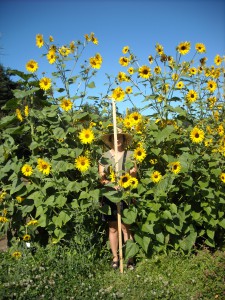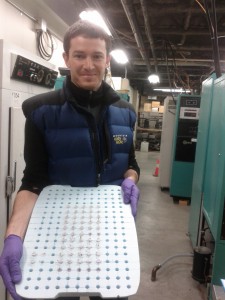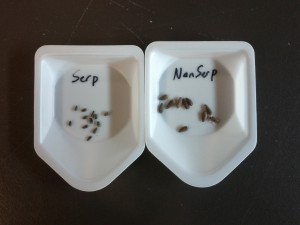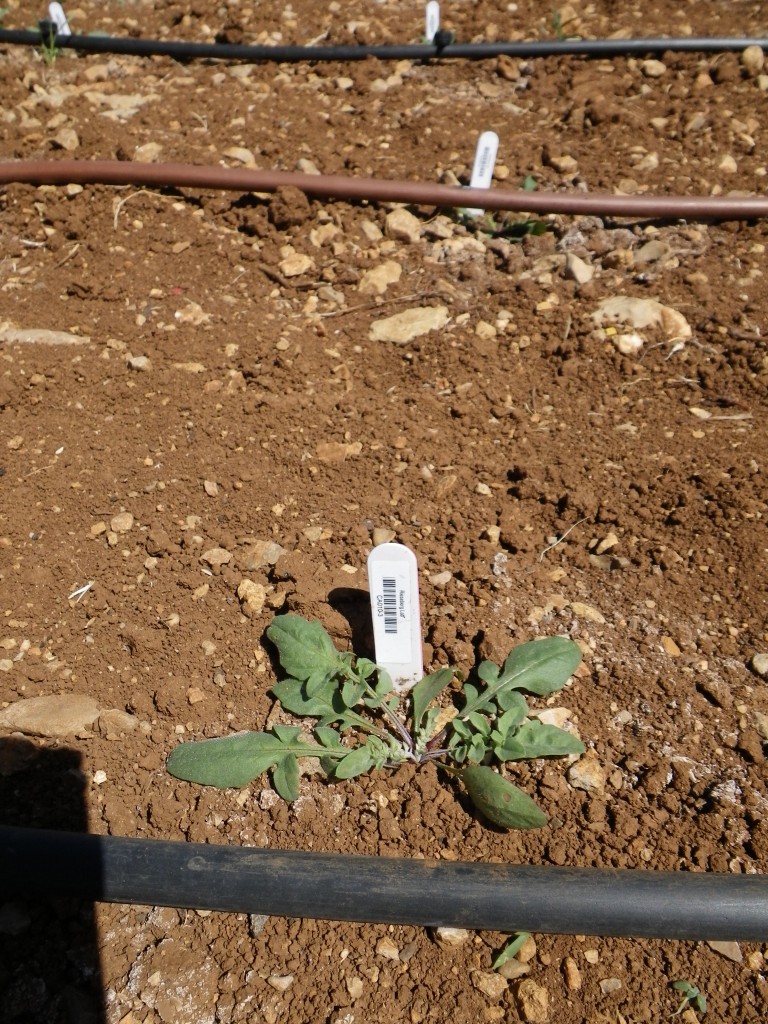You are required to login to view this page.
Category Archives: Phenotyping
Hydroponics test run
Dylan and I have been working on getting hydroponic testing up and running. The basic set up is a large tub filled with dilute nutrient solution, with aeration provided by an air pump. Floating on top of the water is a large foam sheet with holes. In each hole we put a 2 ml tube packed with rock wool and perlite along with a seedling. Extending below the hole is a large bubble tea straw to make sure the roots don’t tangle together while growing.
Seed size in H. exilis
Here is a curiosity I noticed while sorting seeds.
At one of my H. exilis sites (G136) there was a serpentine field beside a raised road. The field had a large population of tiny sunflowers, but there were also a few plants on the gravel embankment beside the road. These plants were much bigger, probably because the soil used in the embankment wasn’t serpentine. I collected seeds from both field and roadside plants.
The roadside seeds are much bigger than the serpentine seeds.
This has several possible explanations:
-Plasticity. The non-serpentine plants are much bigger, being bigger makes their seeds also larger.
-Selection. Bigger seeds are better on the disturbed habitat of the gravel embankment.
-Introgression. Gene flow from H. annuus could be coming in and only persisting on non-serpentine areas, bringing larger seed alleles.
Newest Lab Member – Needs Name
Dear Colleagues,
It is my pleasure to introduce you to our newest lab member… actually it doesn’t have a name yet, but that’s the main reason for this post. This cute little guy/girl needs a name. I have been toying with TERMINATOR, HAL, iRob, and Rob(ot), but I’m sure you can do better. Could be male, female, or gender-neutral and whoever comes up with the best name gets a special treat.
CheapEasy DIY Barcodes in R
I couldn’t believe how expensive the software was for writing barcodes, so I wrote a short program in R to do it for FREE. And, frankly it should be faster and easier if you already have your labels in an Excel file. You don’t really need to understand the program or even R functions to use it, as long as you know how to run an R program.
Setup and Overview:
[UPDATED (see notes below)] – R-code. Start with this (Note I could not upload a .R file, so this is .txt but still an R program).
Input – barcodes128.csv – You need this file to run the program. Save it in your working directory (see comments in R code for how to set this). AND labels.csv – This is a sample file showing the format for your labels. Even though it’s a .csv, it is a single column with each label as a separate row, so there are no actual commas
Output – BarcodesOut.pdf – A sample output: a pdf file for the 0.5″x1.75″ Worth Poly Label WP0517 (Polyester Label Stock), currently in the lab
That’s really all you need to know, everything that follows is extraneous info. If you have any problems, check out the Detailed Instructions, Troubleshooting Tips, or add a comment below. Continue reading
Drought tolerance
Here is a new method for assessing drought tolerance which claims to be fast. Seems interesting.
http://onlinelibrary.wiley.com/doi/10.1111/j.2041-210X.2012.00230.x/abstract
Compiled Sunflower QTLs (GregO)
Last year I worked on a project to see if any of the domestication outlier genes were found with previously mapped QTLs. The project ultimately fell flat when new data showed that the outlier I was working on wasn’t an outlier, but I did compile a large table of sunflower QTLs which may be useful. The table has 369 mapped QTLs.
I’ve shared this with a couple of people, but I’m posting it here on a google doc for everyone to use. Here is the link: https://docs.google.com/spreadsheet/ccc?key=0AgfXIvTZMEqPdHdJWTk3UVlVa3dkdGFTak9ySlUtNkE
A couple notes:
-It was compiled about a year ago, so it may be out of date. Also, although I tried to include every applicable study, I may have missed some. If you do find a study that I missed, I encourage you to add it to the table.
-It is only from annuus crosses, and a majority are domestics
-The position values are in cM
Anyway, read and enjoy. Change it if you find errors or new papers!
Barcode reader (Kathryn)
Tissue area measurements with ImageJ (Allan)
See also this post by Kathryn (Dan E.).
Goal. Convert area to pixels. Measure each pixel for precise area measurement of odd shapes (leaves, seeds etc.) without bias. I’ve included a practice image of an Arabidopsis stem. Continue reading
Image analysis with ImageJ (Kathryn)
Macro Phenotyping (Brook)
 This post is meant to be a mostly comprehensive list and explanation of the non-molecular phenotypes that our lab measures on our various plant populations. At the moment, it is definitely not there yet (for one thing, it has a clear sunflower bias), so please contribute! Continue reading
This post is meant to be a mostly comprehensive list and explanation of the non-molecular phenotypes that our lab measures on our various plant populations. At the moment, it is definitely not there yet (for one thing, it has a clear sunflower bias), so please contribute! Continue reading



